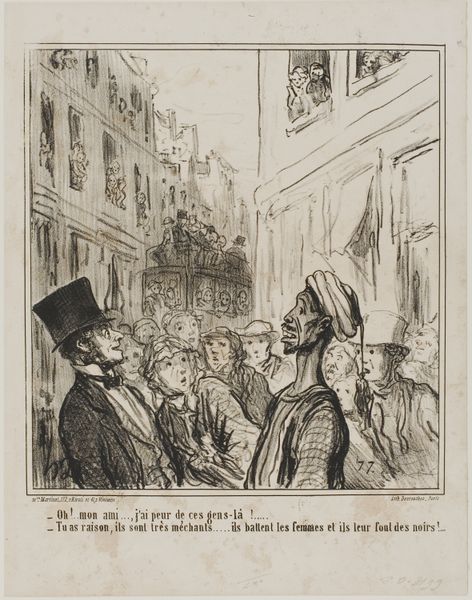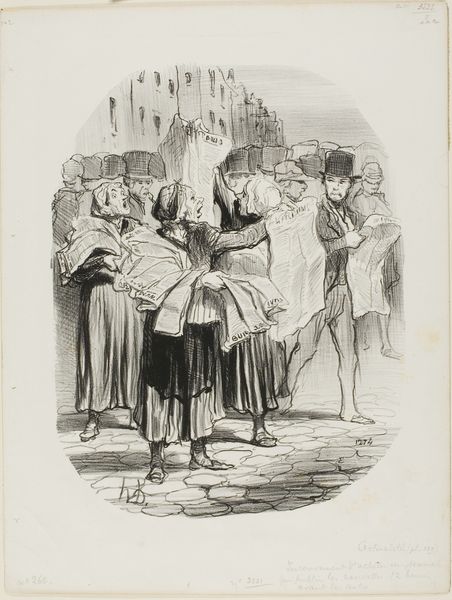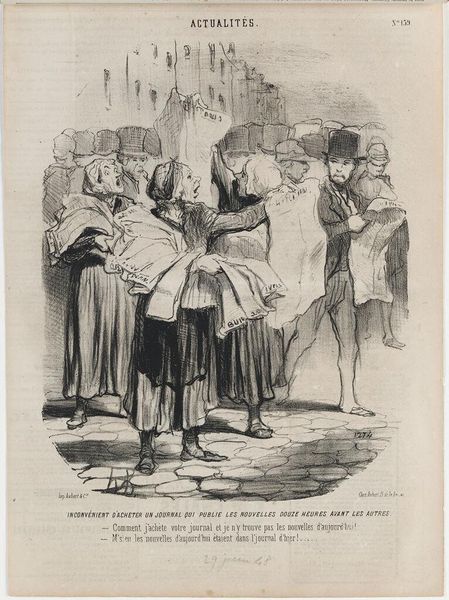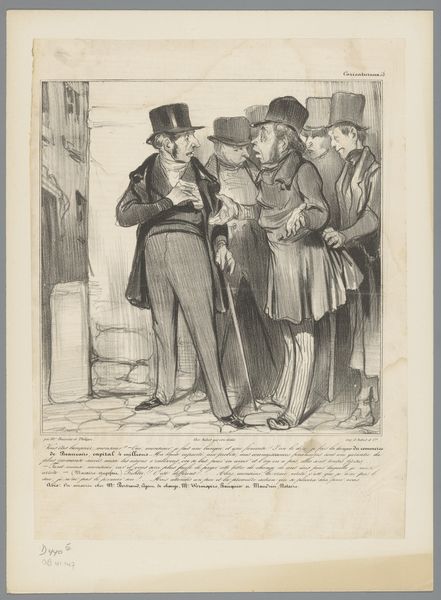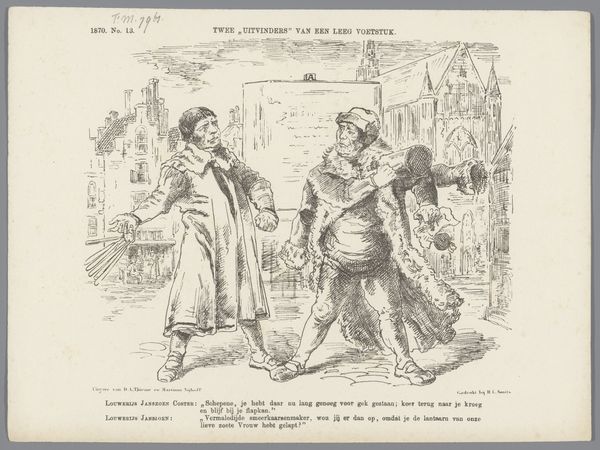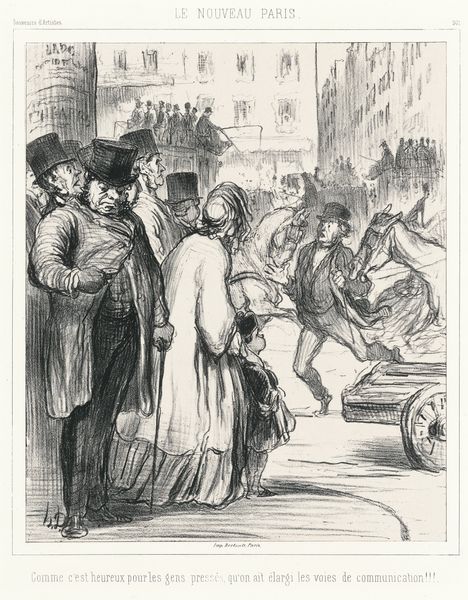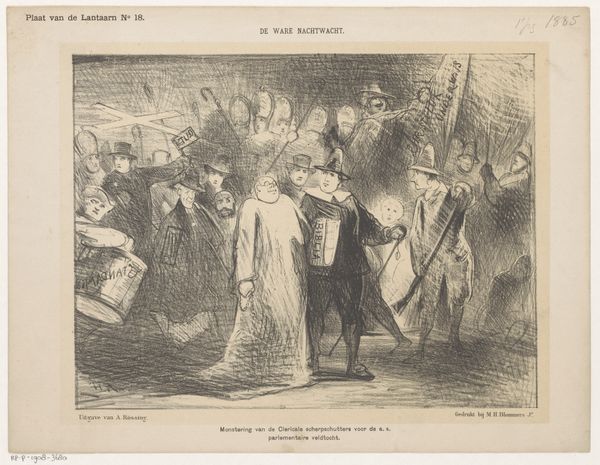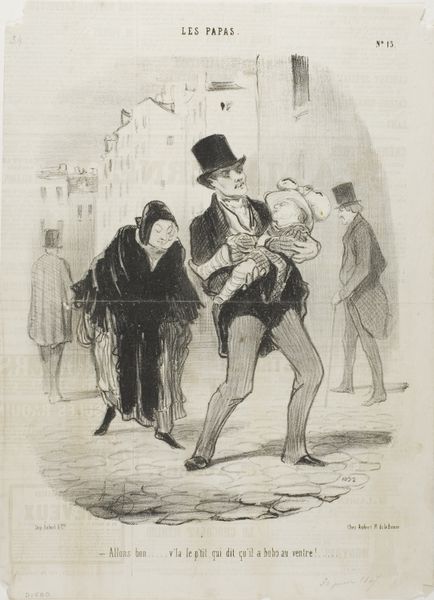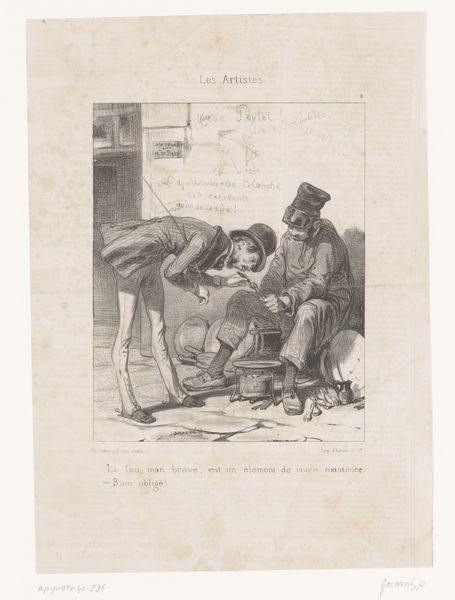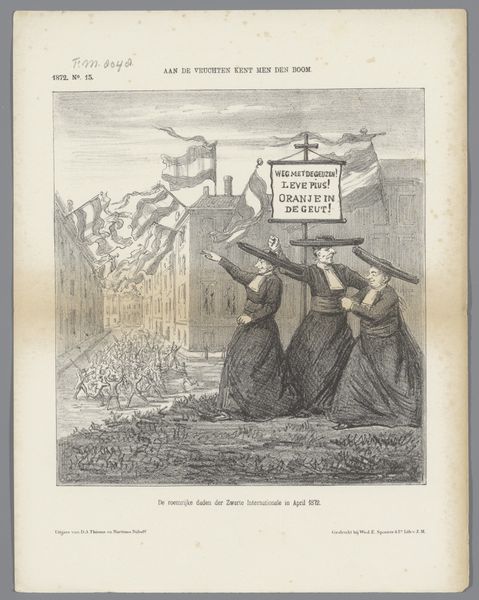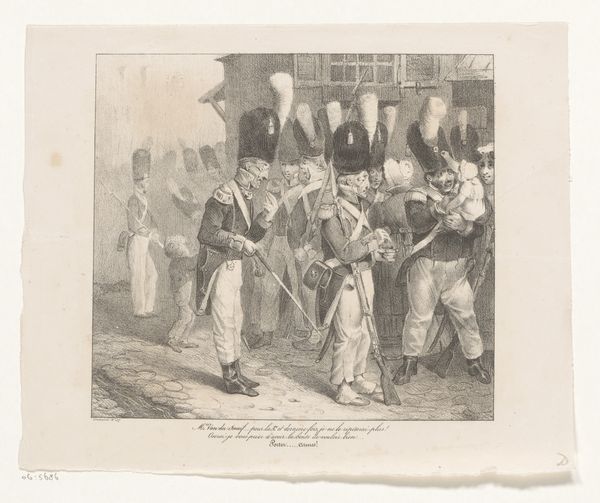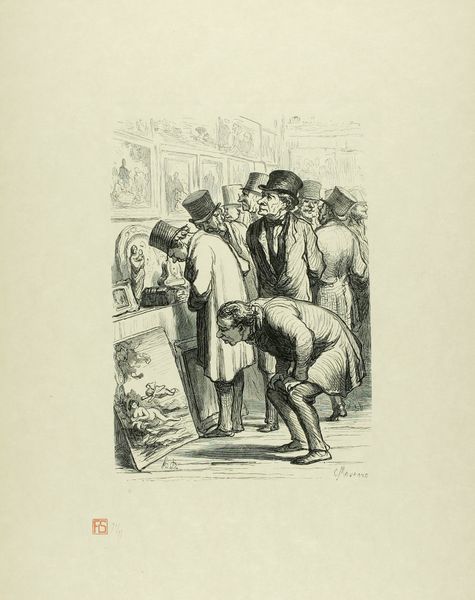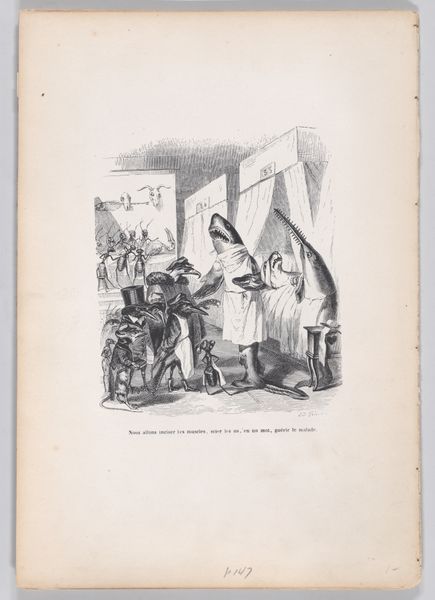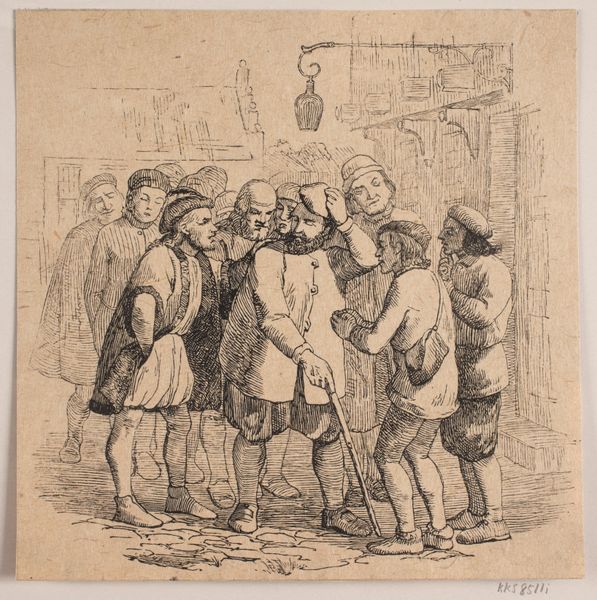
drawing, lithograph, print, paper, ink, pencil
#
drawing
#
lithograph
# print
#
caricature
#
figuration
#
paper
#
ink
#
romanticism
#
pencil
#
19th century
#
watercolour illustration
#
genre-painting
#
watercolor
Dimensions: height 357 mm, width 275 mm
Copyright: Rijks Museum: Open Domain
Editor: This is "Krantenverkoopsters," or "Newspaper Vendors," a lithograph drawing made with ink and pencil on paper by Honoré Daumier in 1848. There’s a real commotion captured here; you can almost hear the shouting. What do you see in this bustling street scene? Curator: Ah, Daumier. He had such a keen eye for social commentary, didn't he? I see a reflection of revolutionary fervor, specifically in 1848's Paris. Imagine, the air thick with news, anxieties, and hopes. Daumier wasn’t just depicting vendors; he was capturing a hunger for information. These figures, with their caricatured expressions, almost become symbols, wouldn't you agree? Are they merely selling papers or embodying the spirit of the age? Editor: I hadn't considered that depth. So, it's more than just a snapshot of street life; it's a reflection of the revolutionary atmosphere itself. The intensity in their faces – is that exaggeration just for comic effect, or does it serve a deeper purpose? Curator: I think it is to heighten the impact of the caricature by illustrating raw, unbridled passions which were the fuel of societal unrest at the time. Also, I can see Daumier showing compassion with the female news vendors that are selling revolutionary newspapers to survive while society shifts around them. He is inviting the public to engage, think and connect with their everyday. Editor: Fascinating! It shifts my perspective. It's not just about the news; it's about the people craving it. Curator: Exactly. Every mark conveys emotion and narrative. The use of the lithographic stone printing allows Daumier to easily share his own viewpoint with many people who might also empathize and rebel against an unjust society. It shows us the artist's capacity to become a kind of 'voice' for the collective consciousness, an element often present in Romanticist pieces. I never get tired of looking at the ways art documents our very humanity! Editor: I see so much more now – the context, the emotion, the quiet rebellion, and the impact of an image that transcends time.
Comments
No comments
Be the first to comment and join the conversation on the ultimate creative platform.
